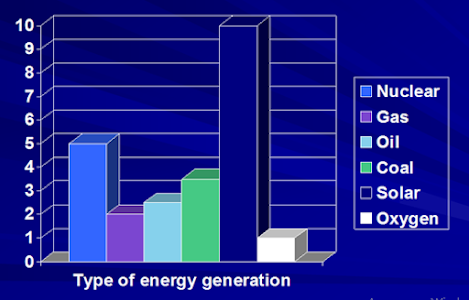Can Renewables Replace Nuclear Power?
Most of
the EU’s 211 operational nuclear plants were built in the 1970s and 1980s and
were designed to last around 40 years, so many are due to close.
But with
the EU committed to decarbonising its energy sector, and nuclear power able to
act as a low carbon source providing electricity around the clock, policymakers
face a choice: either spend billions eking out a few extra years of generation,
or close the plants and build potentially expensive replacements.
The
World Nuclear Industry Status Report 2014 suggests that without swift measures,
nuclear power in Europe could be entering its twilight years. It warns that
unless policymakers make immediate plans to replace ageing plants, by the
mid-2050s, nuclear power across the globe could become a thing of the past.
Even if the plants’ lives were extended by ten years, Europe could still face a
nuclear power crunch sometime in the 2030s.
Ageing plants
Forty
years is a typical lifespan for a nuclear power plant built in the 70s or 80s.
While it’s quite common for plants to have their operational lifetime extended,
particularly in the US, many close earlier. At the moment, only four new plants
are under construction, adding 4.8 gigawatts of capacity to the grid. If that’s
the only new nuclear that’s built – unlikely, as there are plans for more –
Europe would lose 120 gigawatts of nuclear generation capacity by the mid-2050s
The
International Energy Agency says that worldwide nuclear capacity must more than
double by 2050 in order to help limit global warming to 2 °C, the target set by
the U.N.’s Intergovernmental Panel on Climate Change to avert catastrophic
consequences. As of late 2015 a total of 66 reactors are under construction
worldwide, the highest number in 25 years. (There are 437 civilian nuclear
reactors operating worldwide, according to the World Nuclear Association.)
Unfortunately,
in the U.S. the nuclear industry is headed in the other direction. While there
are now five reactors under construction, a number of plants have shut down or
been designated for closure, including at least three scheduled for shutdown in
the next five years. The average age of the U.S. nuclear fleet is 35 years, near
the end of most operating licenses. According to the Nuclear Energy Institute,
a dozen plants, with a combined capacity of 12,189 megawatts, are scheduled for
shutdown between now and 2025.
If those
plants go offline it would mean the emission of an additional 67.3 million tons
of carbon dioxide a year (to replace the lost power with fossil-fuel
generation). Many of these plants, though, will likely keep operating, thanks
to the Nuclear Regulatory Commission’s practice of granting new licenses to
plants that have outlived their original operating licenses. Most of the 100
nuclear plants now generating power in the U.S. were originally licensed for 35
to 40 years of operation; now the NRC is issuing new permits, in 20-year
increments, that will allow them to keep running for 60 or even 80 years.
Eighty reactors (many plants comprise more than one reactor) have already had
their licenses renewed, and many of the remaining ones are likely to come up
for renewal in the next decade.
The
catastrophe
Since
nuclear power was invented, there were two catastrophic accidents (level 7):
Chernobyl in 1986, and 2011 in Fukushima. Both accidents saw a complete
meltdown of one (Chernobyl) or more (Fukushima) core reactors.
In both
cases, the outer walls of the reactor-building were destroyed by hydrogen
explosions and nuclear substances could freely escape. In both cases, vast
areas were contaminated. In Chernobyl, about 50 people died shortly after the
accident from radiation sickness. Different estimates about the long term
effects assume that there may have been tens of thousands of fatalities due to
cancer.
Also for
Fukushima, there are competing estimates ranging from 15 victims to thousands
of possible victims, which the accident may yet claim, due to increasing cancer
rates.
Can Renewables Replace Nuclear Power? This question can be answered with
absolute certainty - and this «Oxygen power plant»
Science team in cooperation with several scientific and industrial
enterprises of Ukraine develops absolutely unique high-efficiency technologies
in the field of alternative and renewable energy of new generation. This
technology uses oxygen to generate absolutely pure heat, mechanical or electric
energy.
The potential efficiency of this
innovative project can completely replace all existing power sources, first of
all, hydrocarbon and nuclear power engineering. At the same time such
technology causes no damage to the environment and has no utilized waste.
We offer you to join us in
creating the experimental low-power oxygen power plants which will be produced
in Ukraine and then put in mass production in your country . Now we are looking
for an investor for the construction of a pilot plant with capacity of 1 MW,
the amount required for the construction of $13.7 М.
If you want to get more details
about this project we will provide you all necessary information and answer all
your questions. My Skype:anndress66 and
e-mail:anndress@ukr.net
Yours faithfully,
Aleksandr Kostritskiy
Project Managing Director






Комментарии
Отправить комментарий